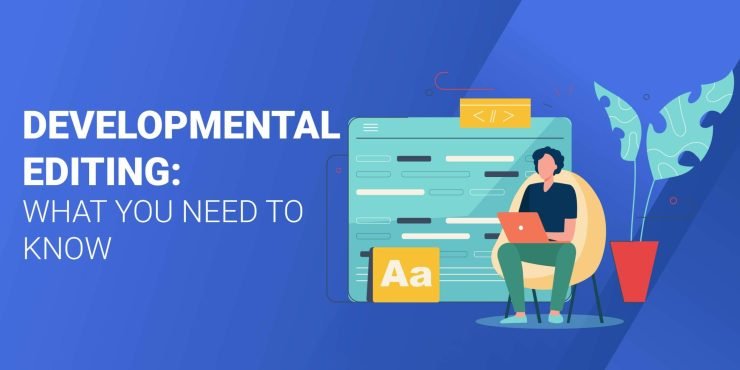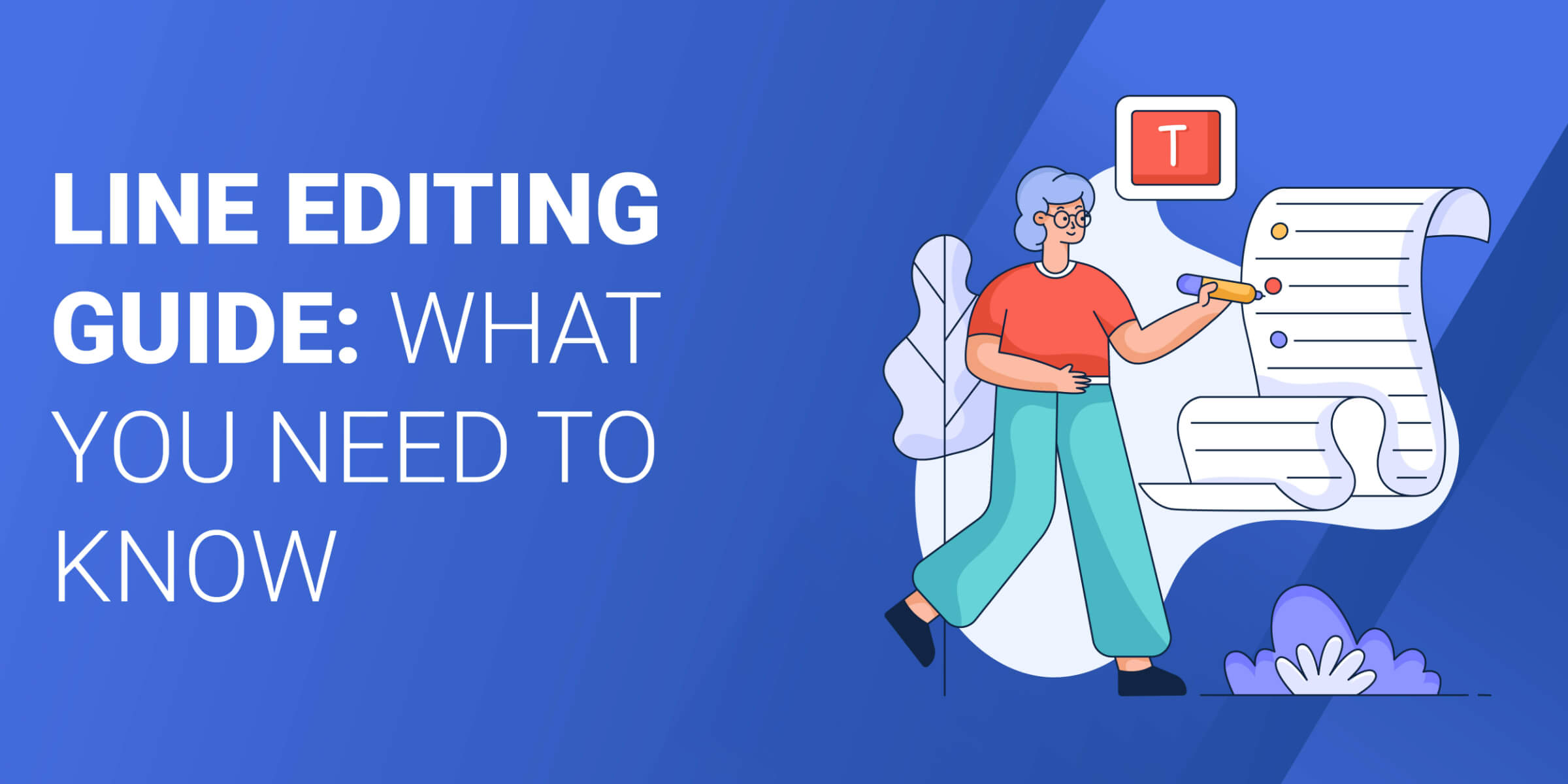So, you’re ready to start editing your articles. That’s awesome! You’re in the right place and the right hands.
As an editor and professor, I know how easy it is to get overwhelmed with the editing process.
I will walk you through each step or stage of the editing process, starting with developmental editing.
Here’s everything you need to know to get started with your developmental edits.
Table of Contents
- What Is Developmental Editing?
- What Is the Role of a Developmental Editor?
- How Much Does Developmental Editing Cost?
- How To Hire a Developmental Editor
- How to Prepare for Developmental Editing
- How To Do Developmental Editing
- What To Do After Developmental Editing
- Developmental Editing vs. Other Types of Editing
- Frequently Asked Questions
We offer this website completely free to our visitors. To help pay the bills, we’ll often (but not always) set up affiliate relationships with the top providers after selecting our favorites. However, we do our best not to let this impact our choices. There are plenty of high-paying companies we’ve turned down because we didn’t like their product.
An added benefit of our relationships is that we always try to negotiate exclusive discounts for our visitors.
What Is Developmental Editing?


As you may have seen in the article “Unlock the Power of Editing: What Are the Different Types?,” developmental editing (DE) is the first step in the editing process.
It focuses on “big picture” issues, particularly how your article's overall structure, flow, and content supports your audience and purpose.
That’s where DE comes in. It’s a high-level view of your article that ensures everything is in the right place and has the proper focus.
You might have heard DE called substantive editing or other names in your research. The industry just can’t agree on what to call everything or how it’s defined. I’m going with a more popular route and breaking down developmental and substantive edits because they focus on two things.
How Long Does Developmental Editing Take?
The time it takes to complete developmental editing depends on the text's length and the editing scope needed.
Assessing the issues and implementing the solutions usually takes me less than 30 minutes or less for an average article. That timeframe typically includes my substantive edits as well.
The timeframe will be longer, of course, for novel-length texts. Usually, developmental edits for novels take about a month.
What Kind of Writing Needs Developmental Editing?
Everything from article- to novel-length texts could benefit from a developmental edit. Nailing down your structure and ensuring that it serves your audience and purpose are not aspects you want to neglect.
That would be about like skimping on a good foundation for your house. If that is not in place, the rest of the text will have issues.
When Should I Use Developmental Editing?
Developmental editing is best done after you have an initial, “as good as you can get it” draft.
What I mean is that you’ve written the strongest draft you can. You’re sure that your structure looks good and that there are no glaring issues—as far as you can see.
Often times, writers are too close to the text to see its flaws anymore. An editor or a beta reader (in the case of novels) will have a fresh set of eyes and perspective to assess the writing. Perhaps, we’ll even understand a concept and leave out topics without realizing that not everyone knows what we mean.
A developmental editor will be able to come in and spot those issues right away and be able to convey the changes needed to mitigate the problems.
What Is the Role of a Developmental Editor?
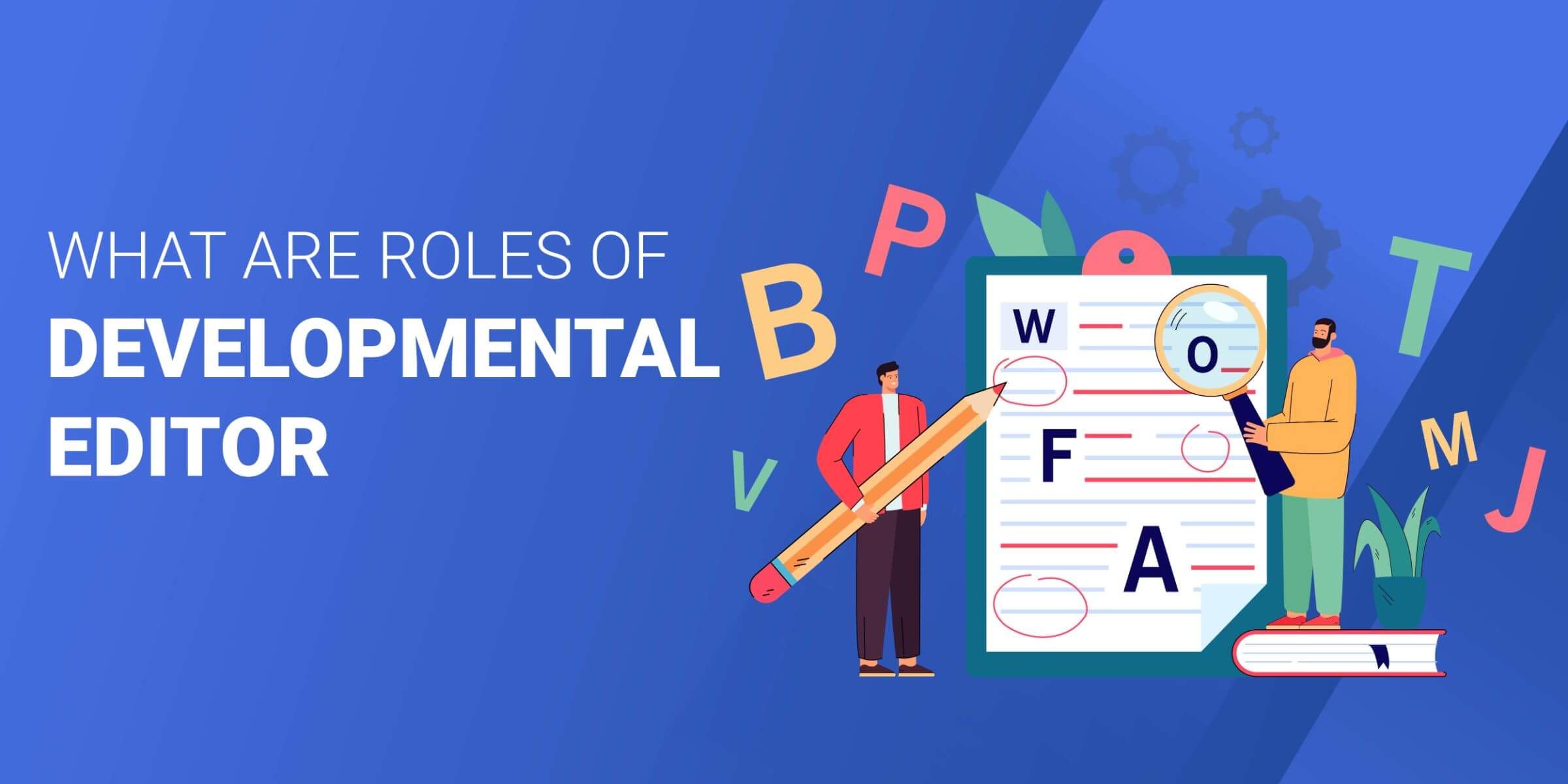

The role of the developmental editor is to ensure that the foundation of your text is strong. As I mentioned before, imagine your text is like a house.
Your developmental editor will ensure that your purpose and audience are clear (the foundation) and that the text’s structure (the framing and roof) is strong enough to support the weight of the wonderful details your audience is looking for.
Their focus will be on the overall or big picture of your text.
Their job is not to fix grammar or polish your sentences. That’s like trying to decorate a house without the drywall being hung.
How Much Does Developmental Editing Cost?
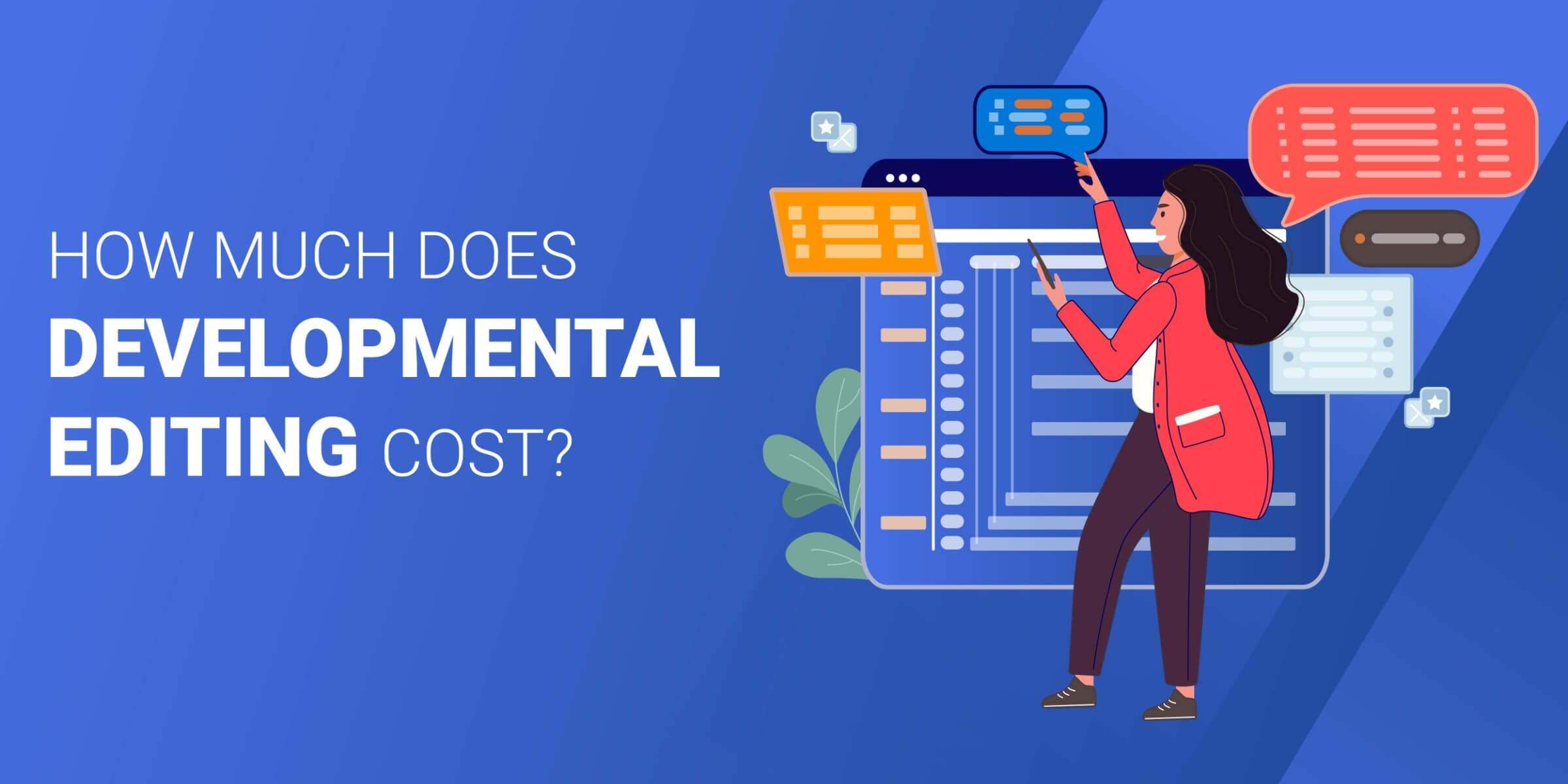

The cost of a developmental edit depends upon the length of the text.
For AI-generated texts, developmental edits should be an automatic part of the package, given AI’s issues with structure.
For human-written texts, the writers are typically given or create their content briefs to follow with an SEO-based outline, so structure shouldn’t be as big of a problem. You will want to focus more on substantive editing, which looks at transitions between paragraphs or sections.
For novel-length texts, your cost will depend on your budget. Expect it to cost around $5 to $10 per page. Typically developmental edits cost more than other types of editing.
How To Hire a Developmental Editor
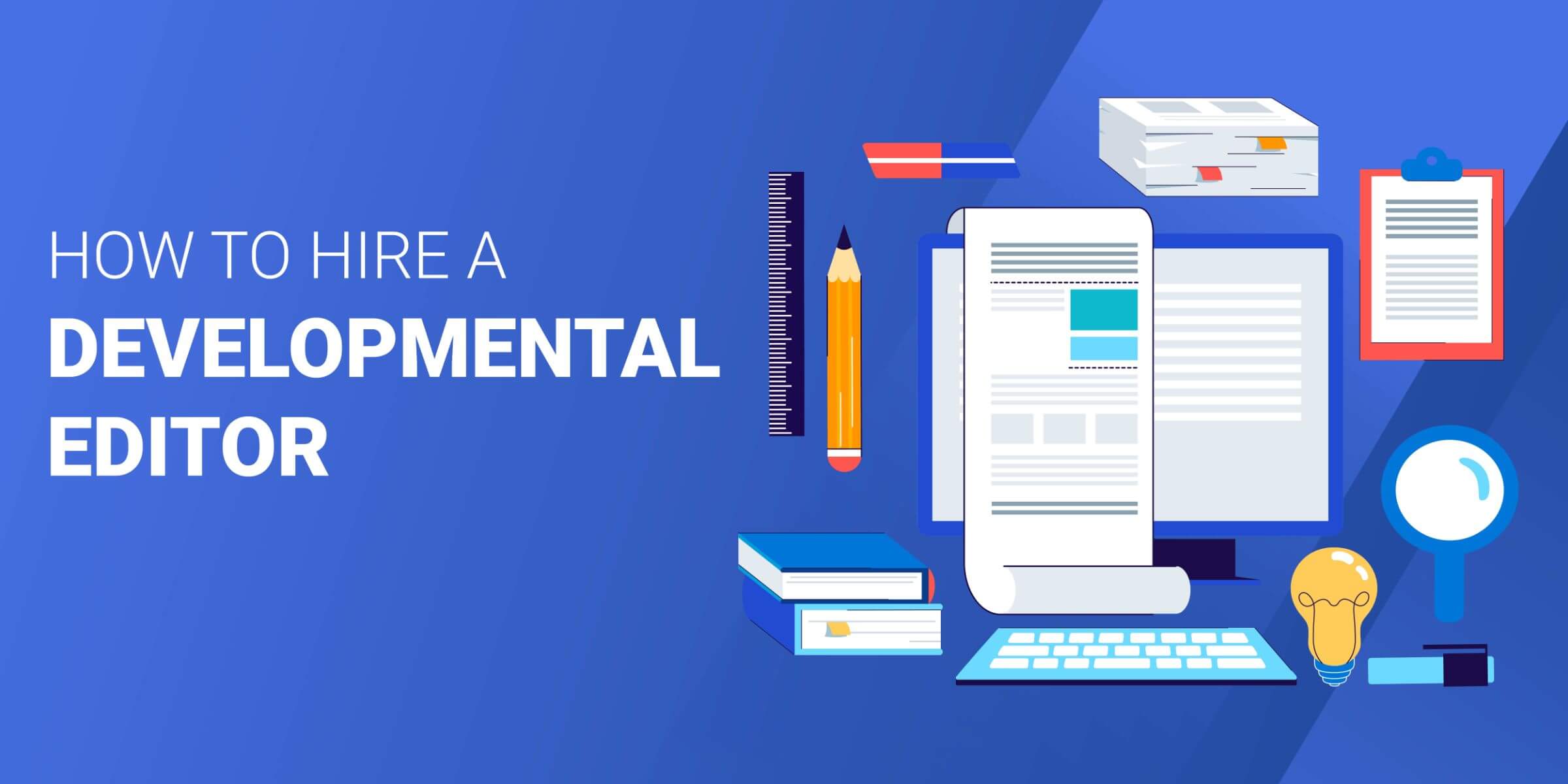

Editors, especially at the novel level, tend to specialize in a specific type of editing. For example, not every proofreader will be a great developmental editor. Those are two different skill sets.
Even for article-length texts, you’ll find that some editors are better equipped to complete certain tasks than others.
So, finding the right developmental editor can be a bit tricky. Here are some areas to consider.
What Qualities To Look For
Experience
Doing a developmental edit requires a different set of skills compared to copy-editing or proofreading. You will want to ensure that the editor you choose has a track record of completing developmental edits.
If you’re looking for an editor to work on AI-generated text, ensure that the editor has done developmental editing in the past. AI-written text has unique issues that editors need the experience to look out for to edit effectively.
Effective communication
A good developmental editor knows how to spot cracks in your article’s or novel’s foundation and structure and will effectively communicate those issues to you. They need to be able to point out an issue, describe why it’s a problem, and offer a solution or two. And do all of this without being overbearing or condescending.
Turnaround times
You will want to see how good they are at keeping deadlines. Depending on what service or platform you’re using to find your editor, check to see that the editor can meet deadlines.
Potential Interview Questions to Ask
Interviewing potential developmental editors doesn’t have to be a daunting task. In addition to asking the sample interview questions below, I would suggest asking for a sample edit of a couple of articles or chapters of a longer text. This step will help you know if their communication and editing style mesh well with your team.
As promised, here are those interview questions:
- Can you describe your experience as a developmental editor?
- What experience have you had with editing AI-generated text?
- What is your approach to working with writers during the developmental editing process?
- How do you balance preserving a writer’s voice while still making significant revisions to their work?
- Can you walk me through your process for assessing an article or manuscript's overall structure and pacing?
- How do you provide constructive feedback to writers without discouraging them or damaging their confidence?
- How do you work with writers who resist making significant changes to their work?
- Can you give an example of a particularly challenging article or text you worked on and how you helped the writer address the issues?
- How do you ensure that the writer’s intended audience is considered during the developmental editing process?
- Can you discuss your experience working with different genres or types of writing, such as fiction, memoir, or academic writing?
- How do you stay current with trends and developments in the industry and incorporate this knowledge into your editing work?
Editing Certifications or Associations
There are tons of editing certifications and degrees out there. Most editors will come from either journalism or English departments.
Editorial associations are a great way to find potential editors. You also know if an editor belongs to one of those associations, they take pride in their work and stay on top of continuing education in the editing industry.
Here are some associations to check out:
- ACES: The Society of Editing
- Editorial Freelance Association
- National Association of Independent Writers and Editors
- PEN: Professional Editors Network
Best Developmental Editing Services
So, you are too busy to nail down the perfect developmental editor. That’s not a problem. Or perhaps you have an overburdened editorial staff. Ready-made editorial services from folks like EditorNinja [review] or PandaCopy [review] are a great alternative.
They can save you time and energy in finding the perfect freelance editor for your team.
The advantage of using one of these editing services is that they’ve already vetted the editors. If you leverage one of these providers, you don’t have to worry about the entire hiring process for a freelance editor.
All you have to do is fill out the submission form and send them the document. It’s a simple process.
They also typically have excellent turnaround times since they have a group of editors to share the load. You don’t have to worry if your editor gets sick while articles are pending. Providers like EditorNinja or PandaCopy can easily assign a different editor if one goes down, which keeps you on schedule.
Best for Basic Editing & Proofreading
Both services allow you to pay per article, but the better deal is to pay for a monthly subscription.
We’ve used both EditorNinja and PandaCopy and were happy with the results. They offer editing services for human- and AI-generated blog articles.
If you would like a more in-depth view of either service, check out our reviews of EditorNinja and PandaCopy.
How to Prepare for Developmental Editing
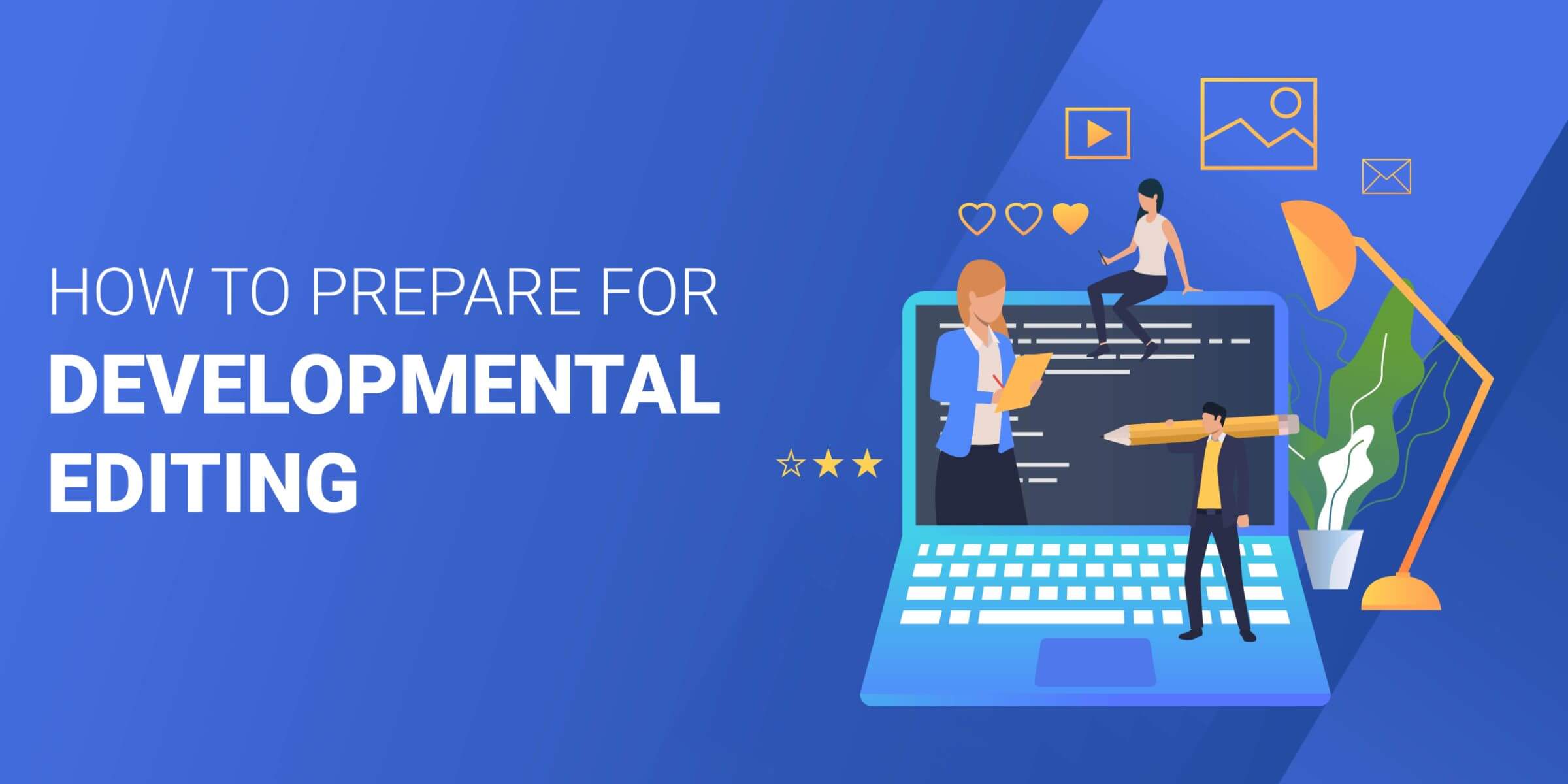

You’ll want to have several areas covered in preparation for developmental editing. An easy road in editing starts with setting up your first drafts for success.
Audience, Purpose, and Structure
As you outline or create a content brief, your first consideration should be who your audience is. Knowing exactly who you’re writing to from the beginning helps inform how you structure your article, the article's purpose, what word choice you will use, and a whole host of other considerations.
Just like with the audience, when the purpose of an article is clear, you’re going to produce a better, cleaner text. Your purpose should stem from why your reader is coming to this particular article and what they want to get out of it.
From there, you can structure or organize your article in a way that gives the reader the information they’re seeking effectively. Just like the order of operations is essential in math, the order you feed information to your reader matters. Your job is to anticipate which questions your reader is asking and supply that information just as they start asking that question.
Cleanest Text
Before you send your text through a developmental edit or to a developmental editor, you’re going to want to make sure it’s as good as you can make it. You’re going to want to do some editing yourself and correct as much as you can.
Sending a rough draft to an editor wastes the editor’s and your time as well as your money. The editor will end up having to fix issues you could’ve otherwise fixed if you had let the text sit for a length of time and come back to it with fresher eyes. You would then be able to catch issues and solve those problems that you would’ve missed if it weren’t for that length of time.
If you send them your best, they can focus on the text’s more pressing issues, which is more bang for your buck. You will have less of a chance of having to come back for additional editing passes, which take more time and more.
How To Do Developmental Editing
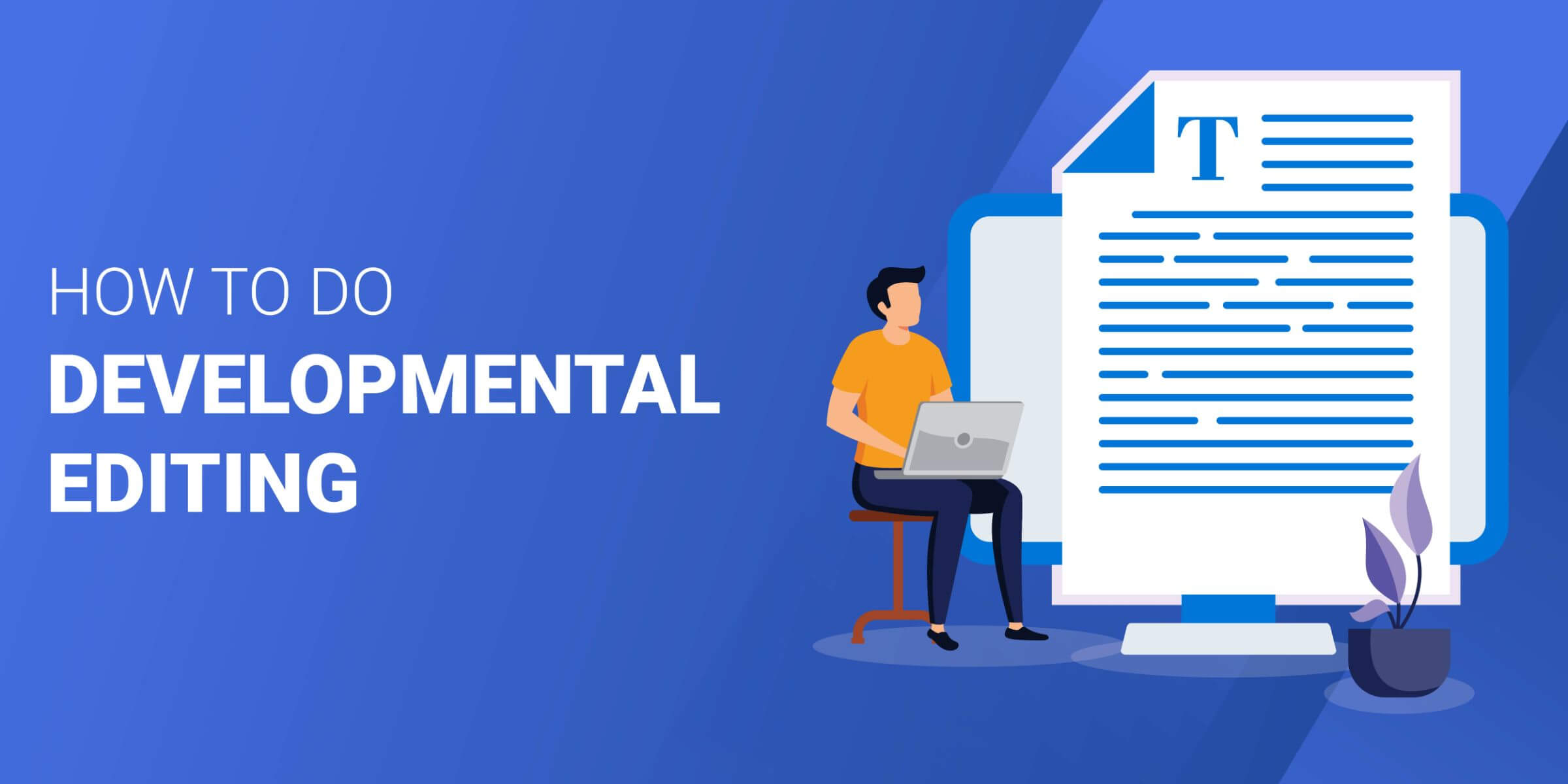

When you or your editor complete a developmental edit, you must remember three elements. Your developmental editor will also be commenting on these aspects as well.
Structure
What are we fixing in a developmental edit? It’s the structure.
The structure underpins all I’m trying to convey to my audience as well as the purpose of my article. In other words, my article’s structure is what I am actually fixing by ensuring that it functions optimally for my audience and purpose.
You will notice that the questions I’m about to propose in the Audience and Purpose sections have a lot to do with structure.
The order of my topics (a.k.a. my article’s structure) will directly affect how well I’ve supported my purpose, which then reflects how well I’ve covered a topic or if something is repetitive or missing.
Audience
As I mentioned before, knowing your audience is key to each type of editing, but it’s essential to getting the developmental edit. In fact, if you don’t have a clear picture of who your audience is, you need to get that fixed immediately.
Your unique audience requires a certain tone, word choice (which comes up in substantive and copy-editing), purpose, and structure.
Keeping your audience and their specific needs is the funnel through which you make every decision.
Here are a few questions you can ask to ensure you’re on track:
- Does this article cover all the topics or points my audience wants to know? What’s missing?
- Is this section really that important for my audience? Or would they find it extraneous?
- Am I using the right words for my audience to understand the concept?
- What terminology does my audience need me to define for them?
- Are the topics in the right order, or will my audience get lost?
Purpose
The second consideration for a successful developmental edit is the purpose. What is this article supposed to do?
For example, the primary purpose of this particular article is to inform my audience about what a developmental edit is. Will it provide a bit of a “how-to” guide on developmental editing? Certainly. But my audience can’t complete a developmental edit if they don’t know what it is and why it’s important.
If I were to write or edit a review, for example, the purpose would be to share my honest opinion about a product with my audience. I want to save them the legwork of determining if a product is worth their time, energy, and money.
If I were to write or edit a listicle, the purpose would be to give my audience information in bite-sized chunks so that she is better prepared to dive deeper into researching a specific topic.
Notice how my purpose always keeps my audience in mind.
When you’re completing a developmental edit on a text, you’ll want to make sure that you ask questions like the following:
- Does the article support the purpose and keep the audience in mind?
- Do the topics covered fall in line with the purpose? If not, I need to cut them.
- Does the order of the topics support the purpose? If I write a how-to, order and sequence are vital for the audience’s success in implementing those steps.
What To Do After Developmental Editing
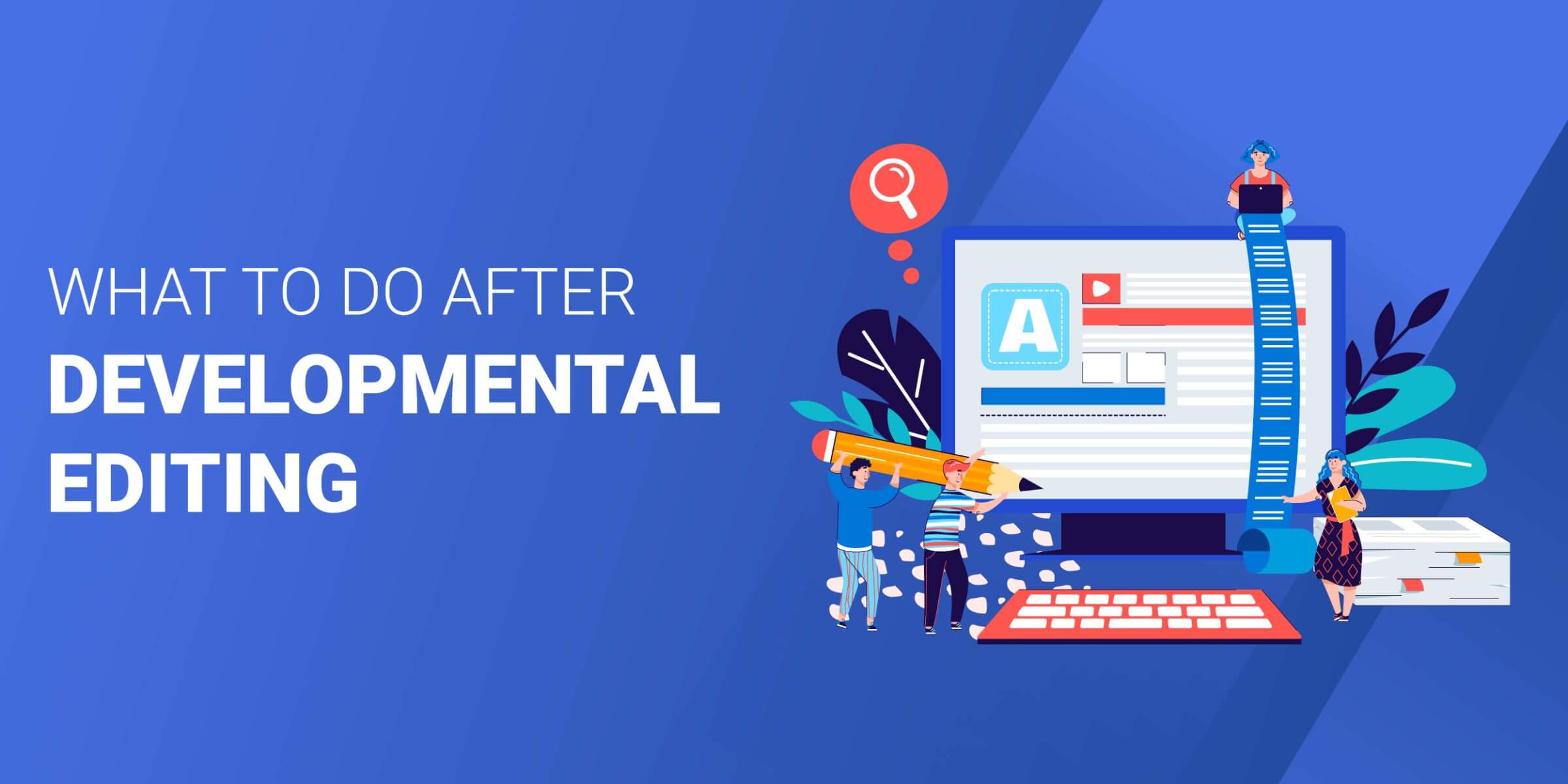

Your post-developmental edit steps will depend on whether you’re doing the editing yourself or through an editor.
If you have an editor suggesting developmental edits, you will have the opportunity to review those and decide which suggestions to implement and which to discard.
When I complete my own developmental edits, my process changes depending on the length. If the text is shorter, I typically make changes immediately in a copy of the original draft. As I implement those changes, I typically smooth out the transitions at the same time. It saves me time, especially since I might forget my train of thought if I step away from the task.
Longer texts provide their own set of challenges. With texts longer than a typical blog article, I tend to treat them like I would if I were editing for another person. Doing this prevents me from constantly rereading the text to find the issues with structure, which helps keep my eyes fresh for other mistakes as I move along.
After implementing the changes from a developmental edit, you will move on to substantive editing. It’s slightly narrower than the developmental edit.
In substantive editing, you look at how well the sections and paragraphs of your article transition into one another.
Developmental Editing vs. Other Types of Editing
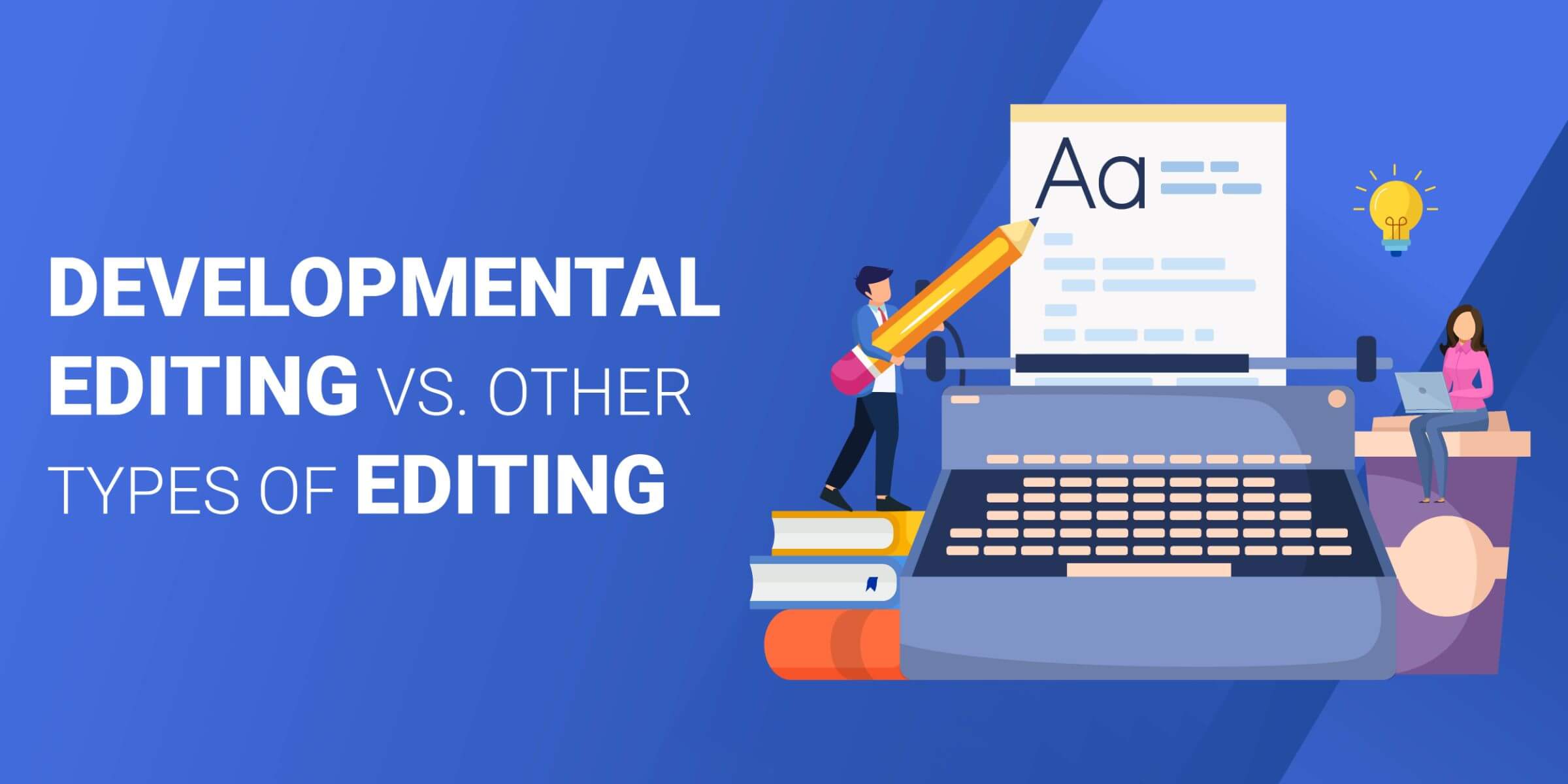

Developmental Editing vs. Line or Copy-Editing
Line editing or copy-editing is about two steps down on the editing ladder. You’re looking at sentence-level issues at the line or copy-editing stage. You’re looking to make sure that your sentence structure is varied and that your word choice is engaging for your readers.
In contrast, developmental editing focuses on the overall structure of your article.
Developmental Editing vs. Proofreading
Proofreading is actually the last step in the editing process. It’s the simplest to understand since it just focuses on grammar.
When we’re doing developmental edits, we’re not looking to correct grammar since we don’t know if we will be keeping or cutting sections.
Developmental Editing vs. Substantive Editing
Substantive editing and developmental editing is often heaped together. They do however focus on two different areas.
Developmental editing focuses on big-picture issues like overall structure.
Substantive editing drills in a bit further by looking at issues at the paragraph level and how well the paragraphs transition from one paragraph or section to the other.
Developmental Editing vs. Editorial Assessment
An editorial assessment gives the writer an idea of the strengths and weaknesses of a text. It’s usually done for a novel-length text. The assessment is usually done to help the writer and editor create a plan of action for improving the novel.
After the editorial assessment, most writers will dive into developmental edits.
Frequently Asked Questions
Is developmental editing worth it?
Yes. Developmental edits are definitely worth it. Skipping developmental editing and going straight to copyediting can result in an article with fundamental flaws in its structure and focus. I strongly recommend that articles receive developmental editing before moving on to copyediting.
Is developmental editing useful for AI-generated content?
Absolutely. It’s not only useful. It’s necessary. AI-generated content tends to be repetitive and have structural issues. Both problems are covered with a developmental edit.
Who should use developmental editing?
Any writer who writes texts that are article-length or longer.
What software do developmental editors use?
Unless you’re writing a novel, there isn’t any software for developmental edits. If you’re writing novels, you can look at Fictionary.














